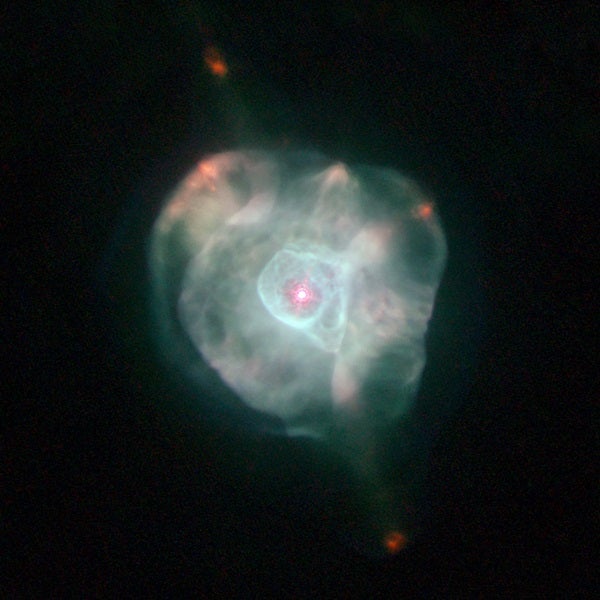The fundamental physics going on is vastly different. A planetary nebula is created when a Sun-like star near the end of its life sheds its outer layers in a wind. The leftover central star then heats that material to temperatures of 10,000 to 20,000 kelvin. A supernova remnant results from the titanic explosion of an entire star, where the shock wave races into the surrounding medium at several thousand miles per second and heats the surrounding gas to millions of degrees.
Because of planetary nebulae’s (relatively) low temperatures, they tend to emit a lot of optical light, which we can break into specific wavelengths that correspond to various elements, like oxygen (a particularly strong signal) and sulfur.
Supernova remnants, on the other hand, are often so hot that they emit X-rays instead of much optical radiation; this is because the elements are almost completely ionized (meaning, most of an atom’s electrons have been knocked off the atom), and this material doesn’t emit optical spectral lines. Old supernova remnants are cooler and thus can emit some optical radiation, but the ratios of the strengths of one spectral line to another (like sulfur to hydrogen) are different from those seen in planetary nebulae. A supernova remnant’s X-ray radiation shows spectral lines from highly ionized, shock-heated elements like oxygen, neon, magnesium, iron, and silicon. Additionally, the extraordinarily hot gas gives off what we call “continuum X-ray emission.” Some planetary nebulae can emit X-rays, but not as a result of shock-heated gas, and we can tell the difference between the processes.
We also see radio emission from planetary nebulae that results from protons and electrons recombining to produce radio spectral lines of hydrogen; this is called “thermal” emission. In supernova remnants, radio radiation is almost entirely “nonthermal,” meaning that it comes from a small number of electrons that the supernova’s shock wave has accelerated to extremely high energies far beyond those of the bulk of the electrons. Interestingly, we believe this process accounts for most of the cosmic rays in the galaxy. These are particles — electrons, protons, and other ions — that have incredibly high energies, millions of times higher than what we can make in our most powerful particle accelerators here on Earth.
NASA’s Goddard Space Flight
Center, Greenbelt, Maryland










